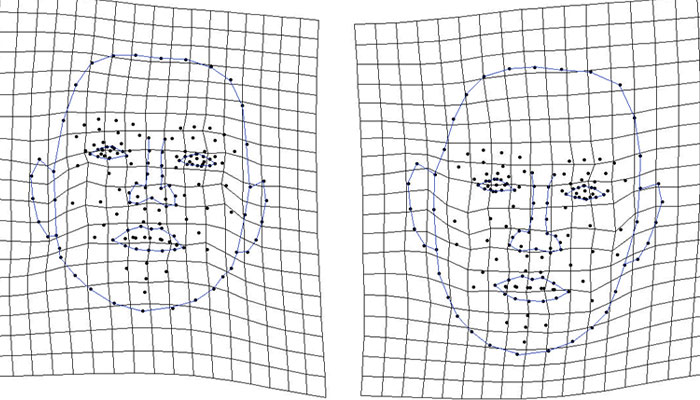While appearance has always been important in deciding who we want to date, dating apps like Tinder have encouraged people to make snap judgments based on just seeing a photograph of a potential partner.

Got the look: Average faces of the men who were least (left) and most (right) open to casual, short-term connections, which women were able to determine.
Researchers at Macquarie University have been studying what information our faces contain about us, and whether members of the opposite sex can use that information to form accurate judgements. Some of the judgements we make might be surprising.
One of the most important things to consider when looking for a new partner is whether you are both looking for the same thing from a relationship. If one partner wants long-term commitment, and the other is looking for something much more short-term, that relationship may be doomed from the outset.
“When we are looking for a new partner, we might be looking for different things,” says Associate Professor Ian Stephen, the researcher who led the study, which has been published in the journal Evolution and Human Behaviour.
It turned out that women were really good at judging whether men were only interested in short-term uncommitted relationships.
“Sometimes we might be looking to form a lasting relationship, but at other times we might just be looking for a fling. We decided to see whether people’s intentions might be revealed by their faces.”
As part of the study, 123 people with an average age of 20 were photographed, and asked to complete the Sociosexuality Orientation Inventory – Revised (SOI-R), a validated questionnaire that measures openness to casual, uncommitted sexual relationships.
These photographs were then shown to members of the opposite sex who were asked to complete the questionnaire on behalf of the person in the photograph.

More inscrutable: Average faces of the women who were least (left) and most (right) open to casual, short-term connections, although men found it difficult to determine.
“It turned out that women were really good at judging whether men were only interested in short-term uncommitted relationships,” says co-author Joe Antar.
“This is a really valuable skill to have, as it would allow women to make subconscious decisions about which men would be a good fit for them, according to their relationship goals.”
- How we can stop animals making us sick
- Which of these 19 ecosystems will succumb to climate change first?
Men, on the other hand, were not able to accurately make similar judgements about women based on their photographs.
“This surprised us,” says Stephen. “The ability to make these judgements would also be really useful to men who are trying to judge who might be interested in short-term uncommitted relationships, and who might be more interested in something longer-term and more serious.”
Testosterone's possible role
This difference between the genders led to another question – are women better than men at recognising partners who are looking for short-term, uncommitted connections because of something in the brains of the people doing the looking, or in the faces of the people being looked at? The researchers decided to use Artificial Intelligence to find out.

AI at work: Visualisations of the facial shapes that the computer algorithm identified as looking less (left) and more (right) open to casual connections.
“If the difference is in the faces, this would mean that there is information about relationship intentions in the faces of men but not in the faces of women. In this case, we should be able to teach a computer algorithm to correctly make judgements about men’s but not women’s relationship intentions,” explains Stephen.
“If the computer could do just as well with both men’s and women’s faces, the gender difference must be in the brains of the observers.”
The results were clear – the AI could make accurate predictions about the relationship intentions of men from their faces, but not about the women.
“We think this points to a role for testosterone,” says Antar.
“Higher levels of testosterone are associated with more masculine-looking facial features, and with more male-typical behaviour like interest in short-term, uncommitted relationships. Because testosterone plays a much smaller role in female development, this would also explain why the information about relationship intention does not appear to be present in women’s faces.
"But we need to do more research to know for sure.”
So when women are deciding whether to swipe left or right on a guy in a dating app, there may be more going on in their subconscious than you realise.
Dr Ian Stephen is Associate Professor in the Department of Psychology at Macquarie University



